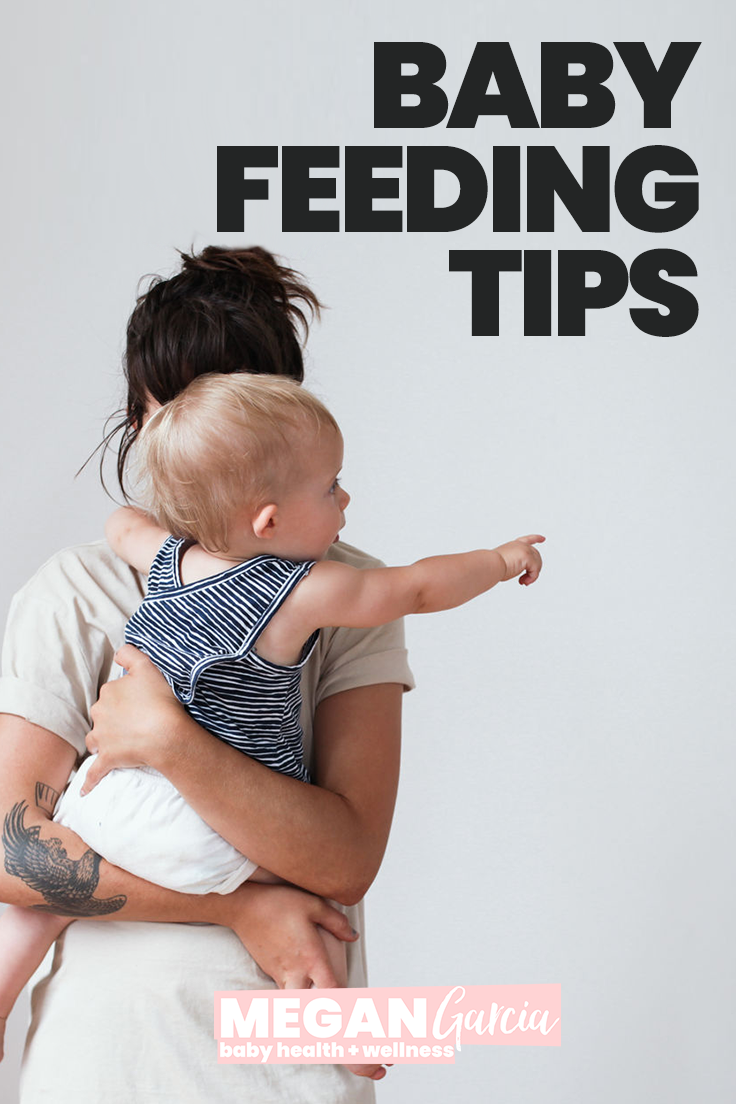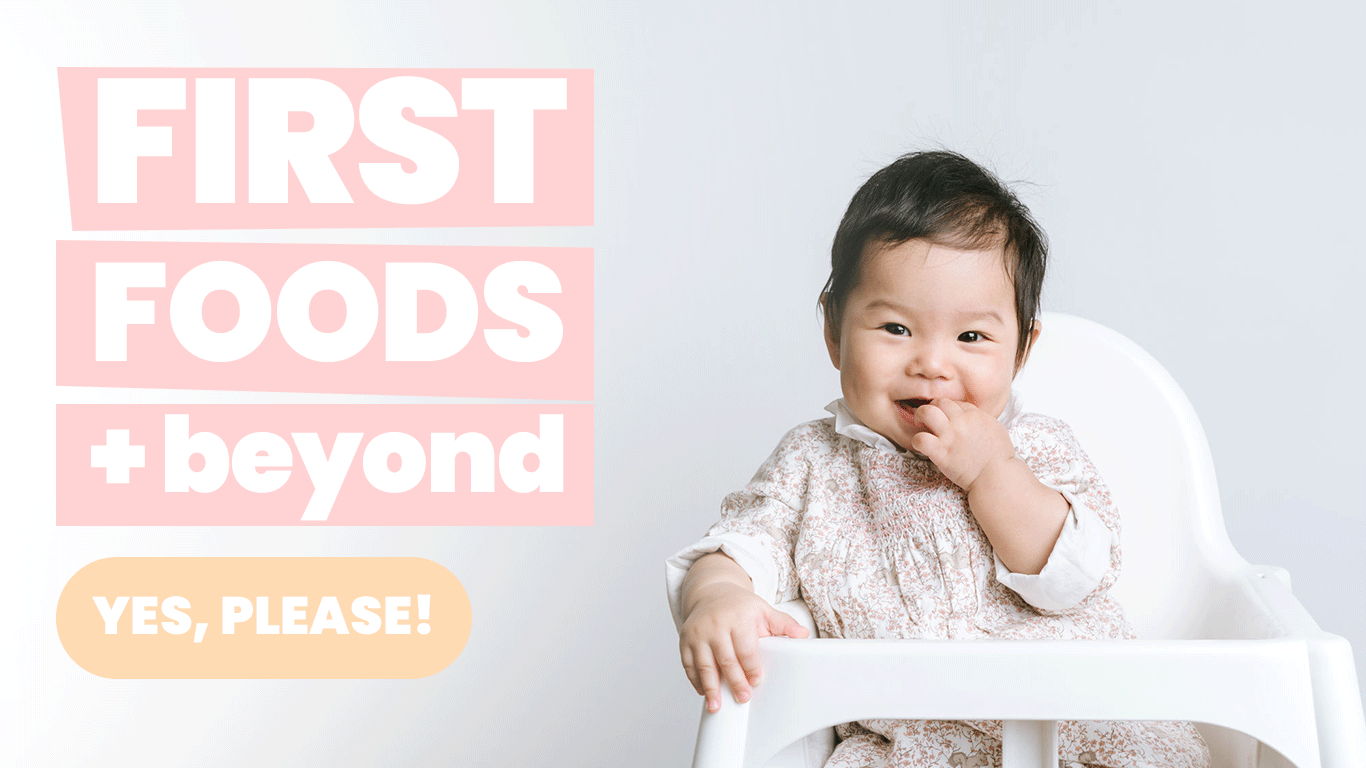 Do a little digging, and you’ll find the internet brimming with baby feeding tips and styles. And when starting baby on solids, you might hear about baby-led weaning, purees, or folks who do a little bit of both.
Do a little digging, and you’ll find the internet brimming with baby feeding tips and styles. And when starting baby on solids, you might hear about baby-led weaning, purees, or folks who do a little bit of both.
But as it turns out, the most valuable baby feeding tip might be something called responsive feeding.
Responsive feeding starts with baby’s very first feed at the breast or bottle, continues through the introduction of solids, and carries on into toddlerhood.
What is responsive feeding?
During responsive feeding, mama (or caregiver) “tunes in” to baby’s cues. These cues signal either interest in food or fullness.
As baby communicates with cues, mama picks up on them and responds in a way that makes sense.
By doing so, the lines of communication between mama and babe are strengthened.
But beyond that, there are other benefits: Responsive feeding also prompts self-regulation.
Whereas non-responsive or controlling feeding takes feeding choices away from baby along with the opportunity to self regulate.
Cues to look for when feeding baby
When it comes to feeding baby, there are dozens of subtle cues that signal interest in food or fullness. These cues are especially important early on when your little one hasn’t yet developed the ability to voice opinions or do much more than cry.
Your job is to pick up on these cues and respond.
For example, your newborn may show an interest in feeding by getting more agitated, turning towards the breasts, bringing hands to mouth, and becoming more distressed until letting out a hunger cry.
But what if all you hear is the cry and at that point, you’re tired and unsure what’s going on.
This is when catching hunger cues can make a difference.
Cues that signal an interest in feeding
- Opening and closing mouth repeatedly
- Opening mouth wide
- Rooting or nuzzling
- Mutual gaze
- Reaching towards your face
- Turning the body towards your breasts
- Hands towards torso, this is a feeding posture
- Sucking on hand or bringing hands to mouth
Cues that signal fullness and the desire to stop eating
- Crying
- Turning their head away
- Arching of the back
- Looking away
Give skin-to-skin, whether bottle fed or breastfed
Catching cues of fullness is incredibly important when feeding baby because it allows your little one to self-regulate from the very start.
And unfortunately, it turns out that this is harder to do with babies fed from the bottle. This includes pumped milk and formula.
Research shows that breastfed babies are more engaged than bottle-fed babies and drop more cues from mama to pick up on. Babies who feed directly from the breast determine when, how long, and how much is consumed.
Which means they may feel more equipped to communicate fullness.
One way to work around missed cues with bottle feeding is to feed your baby skin-to-skin during baby’s first three months.
It’s thought that skin-to-skin contact is one reason why breastfed babies offer more cues.
Feed to nourish, not to soothe
Your little one cries for many reasons. Hunger is one. But it’s important to keep in mind that there are other reasons for baby’s distress and food – even magical breast milk – is not a cure all.
TBH, I’m one hundred percent guilty of offering breastmilk anytime there was an upset.
Bumped your head? Can’t sleep? Feeling the feels? Here, have some breastmilk!
The problem of using food to soothe is obvious for adults; #comfortfood. But for some folks – me included – it gets confusing once you throw breast milk into the mix.
On this point, the science is pretty clear: Feed baby to nourish, not to soothe.
Soothing techniques that don’t involve feeding baby are things like:
- Walking with baby
- Holding
- Touch and massage
- Swinging
- Singing
- Swaddling
Babies need to learn the difference between hunger and other forms of distress like feeling tired, scared, or overstimulated.
And feeding baby as a soothing technique may teach your little one to use food as a way to regulate hard emotions.
Avoid see-through bottles
In 2018, researchers from CalPoly University found that mamas were more sensitive to baby’s cues – and fed their baby less – when using an opaque bottle rather than a see-through bottle.
This was true for pumped breast milk and for formula.
While pressuring baby to finish a bottle can increase how much baby eats, it can also teach your little one to ignore feelings of fullness.
There’s a good chance that breastfeeding is associated with less controlling feeding because when breastfeeding, mamas simply have no idea how much their little one consumes.
So they’re more likely to follow baby’s cues and practice responsive feeding.
Whereas bottle feeding mamas count ounces and are more likely to feed according to a schedule.
In addition, how long you breastfeed your baby is linked how much you control your little one’s eating behavior. Less time spent breastfeeding can predict how controlling mama might be one or even two years later.
In short, breastfed babies are more in control during each feeding.
Because of this, they’re more likely to rely on internal feelings of hunger rather than external prompts to eat, like how much to eat.
You can mimic this effect and let go of ounces by using an opaque bottle, like the ones from Pura or Klean Kanteen.

I am definitely guilty of feeding to comfort. I feel it’s a hard not to when all else has failed. Partners also tend to look at the food source with the also annoying comment “when was the last time you fed baby?”. This puts added pressure on mom to feel like she needs to feed baby even if he/she just ate.
Hey,
Parenting littles (especially when getting unsolicited advice!!) can feel overwhelming. Personally, I like to think of it as a process, always changing and never “perfect.”
Hope this helps and thank you for sharing, xxo!!
My little one is 8 months old and is now on Formula (thyroid issues on my end) and solids. I feel terrible as my focus on getting her to sleep better at night has made me a bit controlling with feeds. She eats & drinks at the lower end of other babies her age, should I jus throw the rule book out and just bring it back to following her lead? I’m concerned if I do she’ll hardly eat much at all!
Hey Aleisha,
YES, it’s best to not be too controlling of how much baby eats. I don’t know the full story – if there’s a history of reflux, there may be a fear around eating and in that case, you’d want to work with a therapist. Otherwise, you can boost appetite with herbs or try working more solids.
Overall, I’ve seen babies really respond well to less pressure. Hope this helps xxo!!
Hey Megan, when baby gets vaccines do I not breastfeed her to soothe her?
Hey Natalya,
Every parent is different, but I personally feel that breastfeeding on demand after vaccines can be extremely helpful because breast milk supports baby’s immune system. If there is a fever or appetite is low, breast milk is also an important source of nourishment.
xxo!!
I was so excited to find your class until I read this blog post. The study you cited is flawed for many reasons. By the same logic that you shouldn’t breastfeed to comfort babies, adults would be walking around with pacifiers because sucking is very soothing to us as babies. I cannot in good conscious take nutrition advice from someone who would discourage breastfeeding in any form. Eating is basic human need and so being human equals finding food comforting. As a child psychiatrist emotional and psychological safety for a baby are more important to me to provide a foundation to develop healthy relationship with food and good coping skills then one study article with bottle feeding and a link to obesity. I would really encourage you to do more researching before dissuading mothers to breastfeed their children. Check out the research on breastfeeding and pain relief, it is a biological response for a reason.
Hi Emily,
Thank you for your note. I am in no way discouraging parents from breastfeeding as I am well aware of the many benefits. I co-slept and breastfed on demand both my babies until they were nearly three years old.
The message here is that we want to encourage and strengthen self-trust. This means listening to cues. And for infants, those cues can be very subtle. So I wrote this blog post as a way to help parents decipher these cues.
If you look into gentle parenting techniques or hand in hand parenting, you’ll find a lot of wisdom in giving littles an opportunity to express their emotions without shushing it away. By doing this, we build a safe space for their discomfort and let them know that it’s okay to feel sad or angry around us. We’re not going to minimize their pain or distract them from it.
I myself practice this because I would like to help my children grow into emotionally aware adults.
When it comes to feeding baby – even before the introduction of solids – we want our little ones to trust their innate hunger and satiety cues. Not just to avoid comfort eating habits as an adult. But also because there’s a lot of inner wealth gained from being able to sit with your emotions and process them.
In regards to the research cited, it’s not groundbreaking or fringe. It’s well accepted and in no way conflicts with an extended breastfeeding relationship.
Thank you again for taking the time to share your thoughts, I hope this clarified my message xxo!!
I’m a soon to be new mom and have been reading about paced bottle feeding. Would this be a decent middle ground since it seems to give your child a chance to give you the hunger/fullness cues? Thanks!!
Hey Liz,
Definitely! The two go hand in hand. UNICEF even refers to paced bottle feeding as responsive bottle feeding.
The highlight across the board and across all ages (from newborn to toddlerhood) is feeding responsively. There’s a lot of science around this and we know it matters xxo!!